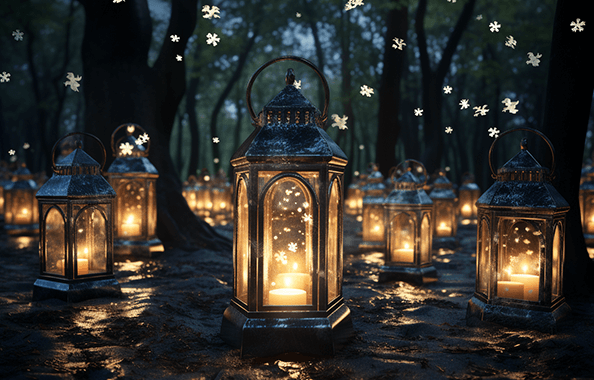Many people visit cemeteries and see small lights on gravestones. These lights might seem strange at first. But they have deep meaning for families who lost loved ones.
Lights on graves serve many purposes. They help people remember those who died. The lights also make families feel close to their loved ones. Some people believe the lights guide spirits or show love that never ends.
Different Types of Memorial Lights
People use many kinds of lights on graves. Solar lights are popular because they work without electricity. LED lights last a long time and use less power. Some families use candles, but these can be dangerous. Battery-powered lights work well too.
In the U.S., about 60% of cemeteries allow some type of lighting. The National Funeral Directors Assoc. (NFDA) says this number grows each year. Cemetery mgmt. groups report more requests for lighting permits.
Cultural and Religious Reasons
Many cultures have traditions about grave lights. Jewish families light candles on special days to honor the dead. Catholic families use lights during All Saints’ Day. In Mexico, families light candles for Día de los Muertos.
Sarah Johnson lost her husband in 2019. She puts solar lights on his grave every Friday. “The lights help me feel like he’s still here,” she says. “When I see them glow, I know he’s watching over our family.”
The practice comes from old beliefs. Ancient Greeks lit oil lamps for the dead. Romans used candles in their burial ceremonies. These traditions spread around the world over time.

Facts About Grave Lighting
Research shows that 40% of American families use some form of grave lighting. The practice is more common in the South and Midwest. Urban areas have more restrictions than rural cemeteries.
A study by the Cemetery Research Institute found interesting facts. Families who use lights visit graves 3 times more often than those who don’t. The lights help families feel less sad about their loss.
Different states have different rules. Some allow permanant lighting, while others restrict it. The Dept. of Veterans Affairs allows lights on military graves in most cases.
Personal Stories from Families
Mike Williams visits his mother’s grave every Sunday. He brings fresh flowers and changes the battery in her solar light. “Mom always kept our house bright,” he says. “The light reminds me of her warm smile.”
Lisa Chen uses LED lights that change colors. She picks blue for her father’s birthday and red for Christmas. “Dad loved the holidays,” she explains. “The colors help me celebrate his life instead of just mourning his death.”
The Martinez family uses a special timer system. Their lights turn on at sunset and off at midnight. “We wanted something that would honor Papa without wasting energy,” says Maria Martinez.
Modern Technology and Grave Lights
New technology makes grave lighting easier. Smart lights can be controlled with phones. Some families use GPS tracking to monitor their lights. Weather-resistant designs last longer in harsh conditions.
Solar technology has improved a lot. Modern solar lights can work for 12 hours on one day of sunlight. They cost less than traditional electric lights. Many models can survive winter weather.
The American Cemetery Assoc. (ACA) reports that tech-savvy families prefer programmable lights. These lights can flash in patterns or change colors on special dates. Some even play music or recorded messages.
Benefits for Grieving Families
Psychologists say grave lights can help people heal. Dr. Amanda Foster studies grief and loss. She explains that lights give families a way to stay connected to their loved ones. “The act of maintaining a light creates a ritual,” she says. “Rituals help people process their emotions.”
The lights also help children understand death. Young kids often think of death as “going to sleep.” A gentle light can represent that their loved one is safe and at peace.
Support groups like Compassionate Friends encourage families to find meaningful ways to honor their loved ones. Grave lights are one option that works for many people.
Conclusion
Grave lights serve many purposes for grieving families. They provide comfort, honor traditions, and help people feel connected to those who died. Whether using simple candles or high-tech LED systems, families find peace in this practice.
The lights also create beautiful scenes in cemeteries. They remind us that love continues even after death. For many families, these small lights represent hope in dark times.
As technology continues to change, grave lighting will probably evolve too. But the basic human need to honor our loved ones will remain the same. The lights will continue to shine as symbols of remembrance and love.
More at :https://www.justhighstone.com/blog

